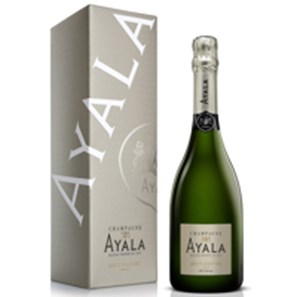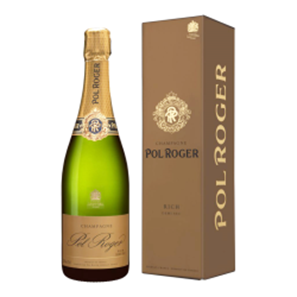If you need help buying the perfect present for any occasion, you’ve come to the right place. Our Knowledge Hub contains advice and information on the art of gift-giving, helping you put a smile on your loved ones’ faces. Read now.
Important celebrations, events, and milestones are best celebrated with family, friends, and a bottle of good bubbly. The sound of a popped cork seems to signal the beginning of the merriment, while the soft swishing and fizzing of the champagne as it is poured on delicate flutes make for a relaxed ambience. Once everyone (of age!) receives a glass, toasts will be made and cheers will finally erupt as everyone sips the chilled, smooth, and delicious champagne.
This is the scenario we imagine people will experience when we gift them a bottle of champagne. Whether it’s a present for a special, momentous occasion or just something to cheer up someone you care for, you will rarely go wrong with a carefully chosen bottle of champagne.
The tricky part is choosing what type of champagne to give. There are so many varieties available that people who are not connoisseurs can easily get confused. What should be the basis for choosing champagne? The colour, flavour or label? The style of the packaging or gift bundles? Or should you choose a distributor instead, and find a champagne seller that will deliver your gift, even abroad?
This article will give you some excellent pointers so that you will be prepared the next time you’re thinking of giving champagne as a present.
As you do when shopping for any kind of gift, you need to think about the person you’re giving the champagne to.
Questions like these will give you some parameters to work with so that it will be easy to narrow down your choices.
Now let’s talk about your options.
A nugget of fact for people who are new to all things champagne: the name is used loosely outside of Europe to refer to sparkling wine. Within the EU, however, “champagne” is only used for wine produced from the Champagne region in France. In fact, it is illegal in the EU to label any product as champagne if it does not come from this famous wine-producing province.
Here’s why you must know if the recipient of your gift has plenty of experience in drinking wine: he or she would know that quality champagne are produced by the biggest Champagne houses (Maisons de Champagne) and elite brands (Grandes Marques) in France. Although the organisation no longer exists, the Club des Grandes Marques and its remaining 24 elite members are still recognised as the top-tier champagne producers in the world.
Gifts international carries some of the Les Grandes Marques, such as Bollinger, Bilecart-Salmon, Lanson, Perrier-Jouët, Louise Roederer, Moët & Chandon, Monopole Heidsieck & Co., Taittinger, Ruinart, Veuve Clicquot, and Pommery.
If you really want to impress, look for the Tete de Cuvée of a Champagne house. It is the “top drop,” the best range offered by a specific house or grower. Tete de Cuvée champagnes are almost always vintage and made from a single harvest, hence the exclusivity of the year. These vintages are also only produced on years when near-perfect weather and soil conditions yield outstanding grapes. Tete de Cuvée champagnes are some of the most expensive and are, therefore, best for ultra-special occasions. Such a gift also indicates how special the recipient is to the giver.
Still on the subject of giving bubbly to connoisseurs, you may want to consider looking for Growers Champagne if you want to make a strong impression.
Growers Champagne refers to wine produced by the farm that grew the grapes. It’s common practice for wineries to buy grapes from different farms or locations, then produce distinctive wines and champagnes using specific combinations. Buying grapes and producing a blend from multiple growers is a cost-effective method of maintaining production volumes and meeting customer demand.
Growers Champagnes are also limited because the EU regulations for this product say purchased grapes can only constitute 5% of the blend. If a winery wants to produce a Growers Champagne, they are limited to using only their own harvest (at least 95% of the blend). This also means that Growers Champagne bottles are limited, and therefore less likely to have been tried by the person you want to surprise it with.
How do you identify a brand that offers Growers Champagne? Look for the number code on the label.
Champagne is classified as sparkling wine. As mentioned above, there are many makers of sparkling wine around the world, not just in France.
If you can’t get your hands on the Champagne-region vintages, you can try vintages from other regions in France and even from other countries as an alternative. Depending on the vintage and price range, you’ll find sparkling wines that will suit both aficionados and learners.
l Sparkling wine from France - There are 23 other regions in France that produce sparkling wines that are excellent alternatives to champagne.
l Crémant - These are sparkling wines made in France beyond the Champagne region. Crémant is designated for bubbly produced using the methode traditionelle. Seven regions in France have Crémant as an official designation included in their names: Crémant de Alsace, Bordeaux, Bourgogne, Die, Jura, Limoux, Loire, and Savoie.
l Cava - These white or pink sparkling wine originate from Spain. They’re also made by methode traditionelle, so their flavours are comparable to authentic champagne.
l Sekt b.A. - A specific type of sparkling wine that comes from a protected designation of origin (PDO) in Germany. It is made traditionally and produced from Chardonnay and Pinot Noir grapes. The Sekt b.A. is different from the ordinary German and Austrian Sekt, which are made following the Tank Method. Ordinary Sekt does not have a POD stamp on its label.
l Prosecco - This sparkling wine is made in the north-eastern regions of Friuli-Venezia and Veneto in Italy and in King Valley in Australia. It is produced from Prosecco (also called Glera) grapes. It is available in two types: fizzy or fully sparkling.
l Franciacorta - Also from Italy, the Franciacorta is widely considered as the country’s finest sparkling wine. It is supposedly the Italian equivalent of France’s champagne. Produced in Lombardy, Franciacorta sparkling wines come in different vintage and non-vintage forms like rosé and white.
l Espumante - Sparkling wine from Portugal. It is grown and produced by winemakers from all over the country, but the highest quality is the Espumante from Bairrada, which is protected by a DOC or a wine classification that strictly defines the geographical source and grape varieties used in making the Espumante Bairrada. This is a worthy gift for a special occasion. Bairrada champagne isn’t your average department store wine, so it ‘s also a good present for people who’re eager to try new champagne vintages.
l Korbel - These are the popular sparkling wines from California. They are similar in taste with the premium French vintages but way more affordable. If you’re giving a bottle to a young person who’s only starting to appreciate champagne, this is a good bottle to start with.
Another important consideration when choosing champagne gifts is taste. If you know the recipient very well, you should also know whether he or she would prefer sweet or dry champagne. If it’s the former, you’ll want to stay away from Brut champagnes.
Brut refers to the sweetness level of sparkling wines. Labels with “Brut” in the names are on the bitter end of the sweetness spectrum.
For easier reference, this is a scale for the sweetness levels of champagnes and sparkling wines with 1 being the least sweet and 7 being the sweetest:
1. Brut Nature (no added sugar)
2. Extra Brut
3. Brut
4. Extra Dry
5. Dry (also called Secco)
6. Demi-Sec
7. Doux (contains an equivalent of 50g sugar per Liter of champagne)
Ironically, when people talk about champagne being “on the dry side,” they are actually referring to the Brut varieties. To avoid confusion, ask the sommelier for the sweeter variants if they are what you are after.
You shouldn’t worry about gifting sweet champagne to someone who’s watching his or her diet. A 150 ml glass of demi-sec sparkling wine contains about eight grams of sugar, which is half of what you get from a gin and tonic, and less than one-fourth of the sugar content in a Jack and Coke.
Review this guide the next time you want to give a bottle of champagne as a gift. Don’t just choose the most expensive or premium bottle you can find. Think of what the other person would enjoy drinking the most, and he or she will surely appreciate your gesture.
Start your search for the best bottle of champagne here at Gifts International. Browse our inventory of premium champagne today.





